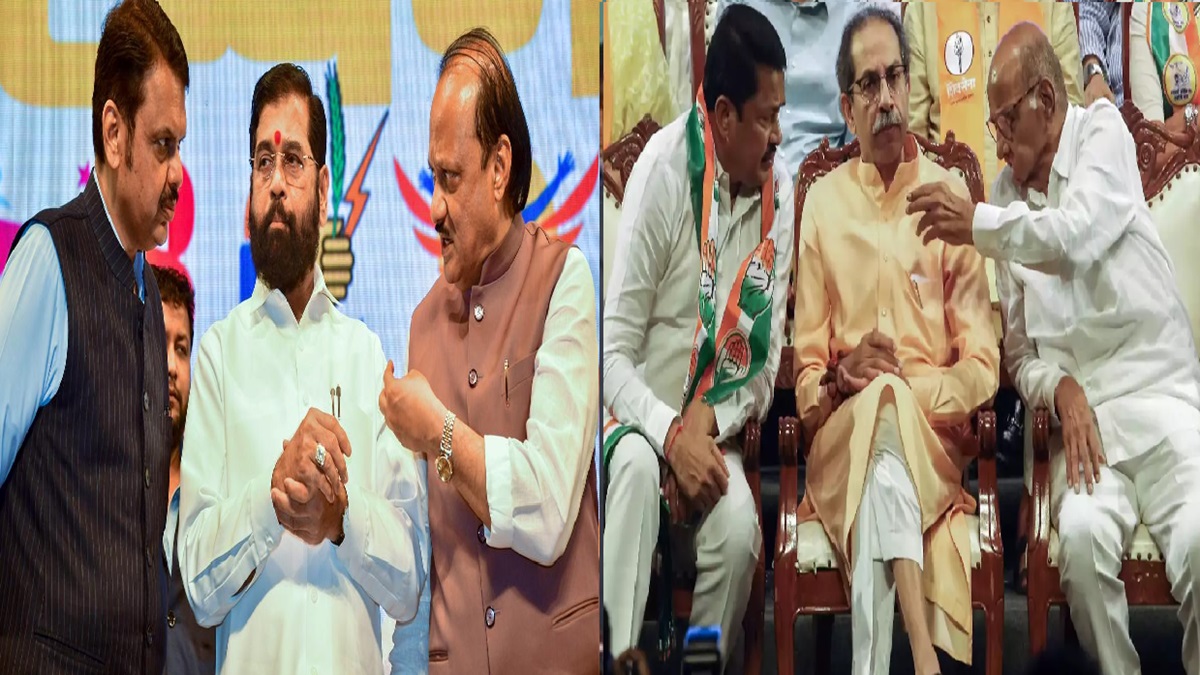 |
|
The upcoming Maharashtra Assembly elections are shaping up to be a fierce battle between the ruling Mahayuti alliance and the opposition Maha Vikas Aghadi (MVA). The coastal belt of Maharashtra, a region that holds significant electoral weight, is set to play a pivotal role in determining the outcome of this political showdown. This region, encompassing Mumbai and the Konkan division, is home to a complex web of alliances, rivalries, and key political figures. The coastal belt's significance stems from its diverse demographics, including urban centers, coastal communities, and tribal populations, making it a microcosm of Maharashtra's political landscape.
The most urbanized and industrialized region, including the Mumbai metropolitan area, sends 75 MLAs to the Assembly. Mumbai, a stronghold of the Shiv Sena, is set to witness a particularly intense contest between the two factions of the party: the Shiv Sena led by Chief Minister Eknath Shinde and the Shiv Sena (UBT) led by Uddhav Thackeray. This rivalry adds an extra layer of complexity to the election, with voters having to decide between the two factions.
The coastal Konkan division, stretching from Sindhudurg to Mumbai and encompassing Palghar, Thane, Raigad, and Ratnagiri districts, is another key area of focus. In the recent Lok Sabha elections, the Mahayuti alliance secured seven seats in the Konkan region, with BJP victories in Palghar, Ratnagiri-Sindhudurg, and Mumbai North, NCP securing Raigad, and Shiv Sena winning Thane, Kalyan, and Mumbai North West. In the upcoming assembly elections, former Union minister Narayan Rane, who won the Ratnagiri-Sindhudurg Lok Sabha seat, is expected to be a key player for the BJP in the Konkan region.
Beyond the political maneuvering, the coastal belt faces several key issues including housing, urban poverty, and infrastructure challenges, brought on by rapid population growth. The Congress, once a strong force in the region, has seen its influence wane, particularly in Mumbai, where it has ceded ground to the Shiv Sena (UBT) within the MVA. The 75 constituencies in this region are spread across tribal-dominated Palghar, Thane (including Thane city), Mumbai, Raigad, Ratnagiri, and Sindhudurg districts.
The upcoming assembly elections are not limited to the coastal belt; the state's electoral map also includes Vidarbha, North Maharashtra, Marathwada, and Western Maharashtra, each presenting its own set of political dynamics and challenges. Vidarbha, with 62 assembly constituencies, is politically significant due to the presence of key leaders like Deputy CM Devendra Fadnavis, opposition leader Vijay Wadettiwar, state Congress chief Nana Patole, and BJP counterpart Chandrashekhar Bawankule. Here, the Congress aims to regain lost ground against the BJP, which has made substantial inroads in the past decade.
The Marathwada region, with 46 assembly segments, is known for its Maratha quota agitation, and the Congress and Uddhav Thackeray-led Shiv Sena (UBT) are expected to have an advantage over their rivals. North Maharashtra, with 47 seats and known as the onion belt, faces agricultural challenges and is dominated by political heavyweights like BJP's Girish Mahajan, NCP's Chhagan Bhujbal, and Shiv Sena leader Gulabrao Patil. The Congress has emerged stronger in this region after winning Dhule and Nandurbar Lok Sabha constituencies.
Western Maharashtra, with 58 assembly seats, is anticipated to be the site of a high-stakes rivalry between Sharad Pawar and his estranged nephew and Deputy CM Ajit Pawar, particularly in Baramati. A fierce battle is likely between Ajit Pawar and his nephew Yugendra Pawar if the latter is fielded by NCP (SP). The assembly elections are considered an acid test for the BJP, which has held a dominant position in Maharashtra for the past decade. Despite a disappointing performance in the 2024 Lok Sabha elections, the party is aiming to regain its footing, with the Haryana victory providing a boost to the cadre.
The BJP, having won 122 assembly seats in 2014 and 105 seats in 2019 in alliance with the undivided Shiv Sena, faces challenges due to the Shiv Sena split in 2022. On the other hand, the Congress, buoyed by its recent performance in Lok Sabha elections, seeks to solidify its position within the MVA alliance and increase its seat count. The outcome of the elections promises to be a reflection of the state's complex political landscape, marked by shifting alliances, regional rivalries, and critical issues facing the people of Maharashtra.
Source: Maharashtra Assembly elections: How coastal belt plays decisive role in poll battle | EXPLAINED
